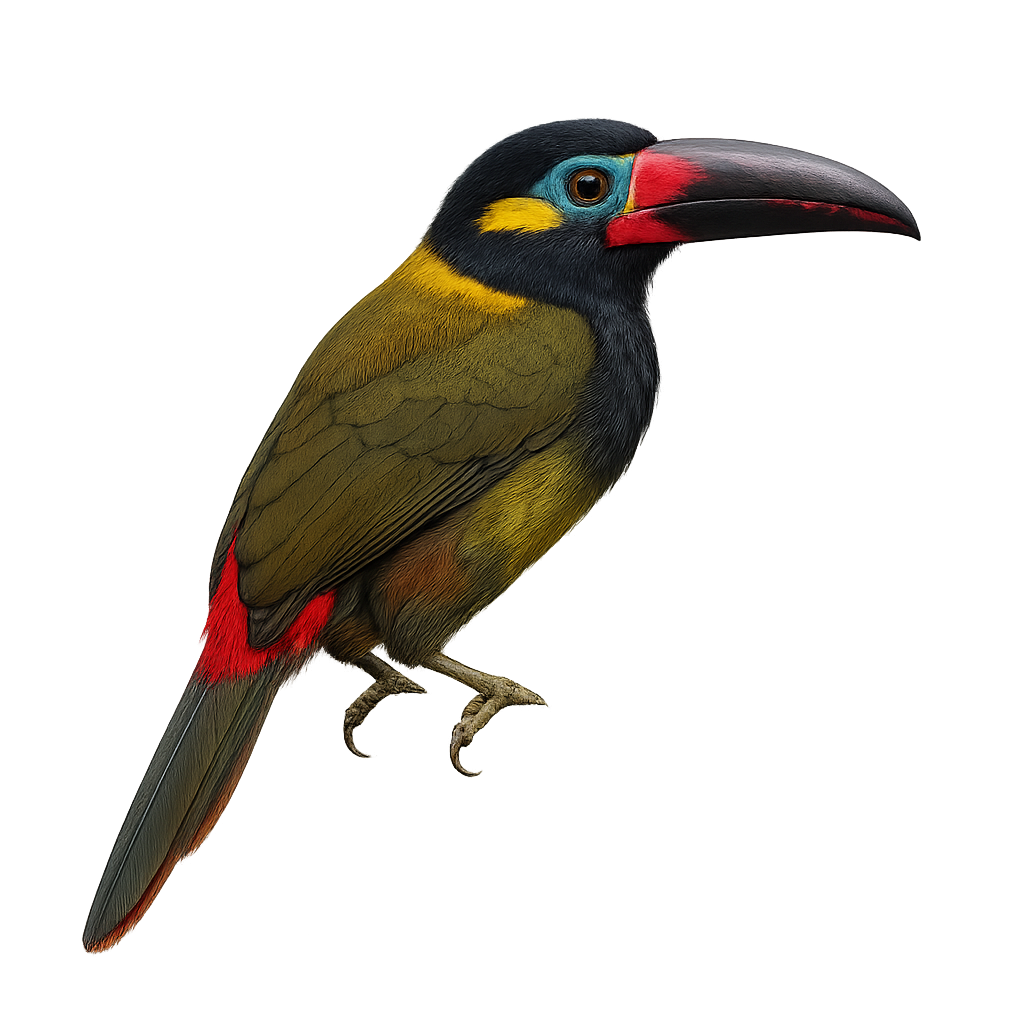Your wildlife photography guide.
Explore the yellow-eared toucanet in detail, study its behavior, prepare your shots.
Where to observe and photograph the yellow-eared toucanet in the wild
Learn where and when to spot the yellow-eared toucanet in the wild, how to identify the species based on distinctive features, and what natural environments it inhabits. The WildlifePhotographer app offers tailored photography tips that reflect the yellow-eared toucanet’s behavior, helping you capture better wildlife images. Explore the full species profile for key information including description, habitat, active periods, and approach techniques.
Yellow-eared Toucanet
Scientific name: Selenidera piperivora

IUCN Status: Least Concern
Family: RAMPHASTIDAE
Group: Birds
Sensitivity to human approach: Suspicious
Minimum approach distance: 10 m
Courtship display: December to February
Incubation: 16-18 jours
Hatchings: December to March
Habitat:
Tropical rainforests, secondary forests, forest edges
Activity period :
Primarily active during the day, with peak activity in the morning and late afternoon.
Identification and description:
The Yellow-eared Toucanet, Selenidera piperivora, is a bird from the Ramphastidae family. It is recognized for its colorful plumage, mainly green with yellow hues around the ears, hence its name. Its beak is robust and multicolored, typical of toucans. This bird is endemic to the tropical rainforests of South America, particularly in Brazil, Guyana, and Suriname. It usually lives in pairs or small groups, feeding mainly on fruits, but also on insects and small vertebrates. The Yellow-eared Toucanet plays a crucial role in seed dispersal, thus contributing to forest regeneration. Its presence is often an indicator of the health of its natural habitat.
Recommended lens:
400mm – adjust based on distance, desired framing (portrait or habitat), and approach conditions.
Photography tips:
To photograph the Yellow-eared Toucanet, focus on tropical rainforests where it is most active. Use a telephoto lens of at least 400mm to capture detailed images without disturbing the bird. Be patient and discreet, as this bird is suspicious. The best times to observe it are early in the morning or late afternoon when the natural light is soft. Bring a tripod to stabilize your camera and adjust the ISO settings to compensate for the low light under the dense canopy.
The WildlifePhotographer App is coming soon!
Be the first to explore the best nature spots, track rutting seasons, log your observations, and observe more wildlife.
Already 1 431 wildlife lovers subscribed worldwide

